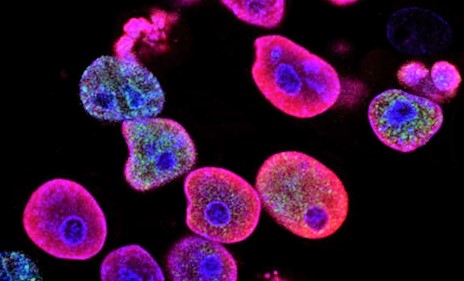A Review of Natural Therapies Potentially Relevant in Triple Negative Breast Cancer Aimed at Targeting Cancer Cell Vulnerabilities Webb MJ & Kukard C 2020 Integrative Cancer Therapies, Vol 19: 1-18.
This suppression-centric aim targets mechanisms of growth with the goal of potentially halting tumor growth and preventing cancer cell metabolic adaptation.
The ten main pathways that TNBC uses for growth are:
- HIF-1hypoxic factor
- Hedgehog canonical signaling pathway
- MAPK pathway
- MTAP used for polyamine synthesis
- NF-κB signaling pathway
- Notch pathway (Ligands: Jagged1, Jagged2, and δ-like ligand 1, 3, and 4)
- PI3K/Akt/mTOR signaling pathway
- p53 and POLR2A gene expression
- STAT3 signaling pathway
- Wnt/ β-catenin pathway
Our aim is to devise a potential treatment approach for the prevention of cancer recurrence using non-pharmaceutical natural compounds. Prospective randomized clinical trials would eventually be required to test the efficacy of this natural therapy strategy.
This treatment is intended to be complementary to traditional cancer treatments such as chemotherapy, immunotherapy and radiation, and not a substitute.
It is primarily for those patients whose tumors have no pharmaceutical agents left available to them, whose traditional treatment has been completed and those to whom it is not accessible.
Our strategy may potentially also be useful for patients with ongoing chemotherapy or immunotherapy treatment if there are no contraindications between the posttreatment drugs and their mechanisms of action and the substances determined using our steps.
Our review found 10 different mechanisms of growth suppression in TNBC cells and 21 natural compounds, that are available as supplements for retail purchase, that suppress them.
They are sold either as the isolated active agent as in fisetin or more commonly as a herbal medicine of the source substance such as Ashwagandha produced from the plant Withania somnifera.
These natural substances have bioactive compounds that directly suppress the growth of TNBC cells via 1 to 3 of these 10 mechanisms.
The studies comprised both in vivo and in vitro studies. The basic requirements for potential chemopreventive and therapeutic agents require them to be effective against tumor cells in vitro and in mouse tumor models in vivo, relatively non-toxic to the normal cells, and have presumed adequate bioavailability.
Treatment Array
A potential treatment array would include the compounds that suppress multiple pathways.
For our example of a treatment array compiled of herbal medicines and natural supplements from the 21 compounds, we might choose 7 (two from each pathway) that potentially suppress all pathways simultaneously.
From each pathway, these include:
- HIF: Garlic and Soybean
- Hedgehog: Garlic and Sulforaphane
- MAPK: Panax ginseng (Korean Ginseng), Fisetin and Quercetin
- MTAP: Curcumin (with piperine to assist uptake)
- NF-κB: Garlic and Panax ginseng (Korean Ginseng)
- Notch: Arctium lappa (Burdock), Withania somnifera (Ashwagandha) and Quercetin
- P13K: Withania somnifera (Ashwagandha), Sulforaphane, Panax ginseng (Korean Ginseng) Curcumin (with piperine) and Quercetin
- p53: Panax ginseng (Korean Ginseng), Curcumin (with piperine) and Soybean,
- STAT 3: Arctium lappa (Burdock) Fisetin and Quercetin
The 7 substances of our final array are : Curcumin, Burdock, Garlic, Fisetin, Korean Ginseng, Sulforaphane and Quercetin.
SAFETY Contraindications between substances and any prescribed drugs should be checked with a qualified pharmacologist before consuming. Until further studies are done, the effective dosage of these compounds (either in isolated form or as herbal medicines) is unknown. The safe dose of herbal medicines is presumed to be that recommended by the product manufacturer. A methionine restricted diet would only be commenced after all traditional chemotherapy, immunotherapy and radiotherapy treatments are completed. SCANS is NOT INTENDED to replace traditional cancer therapies, rather it is complementary.
